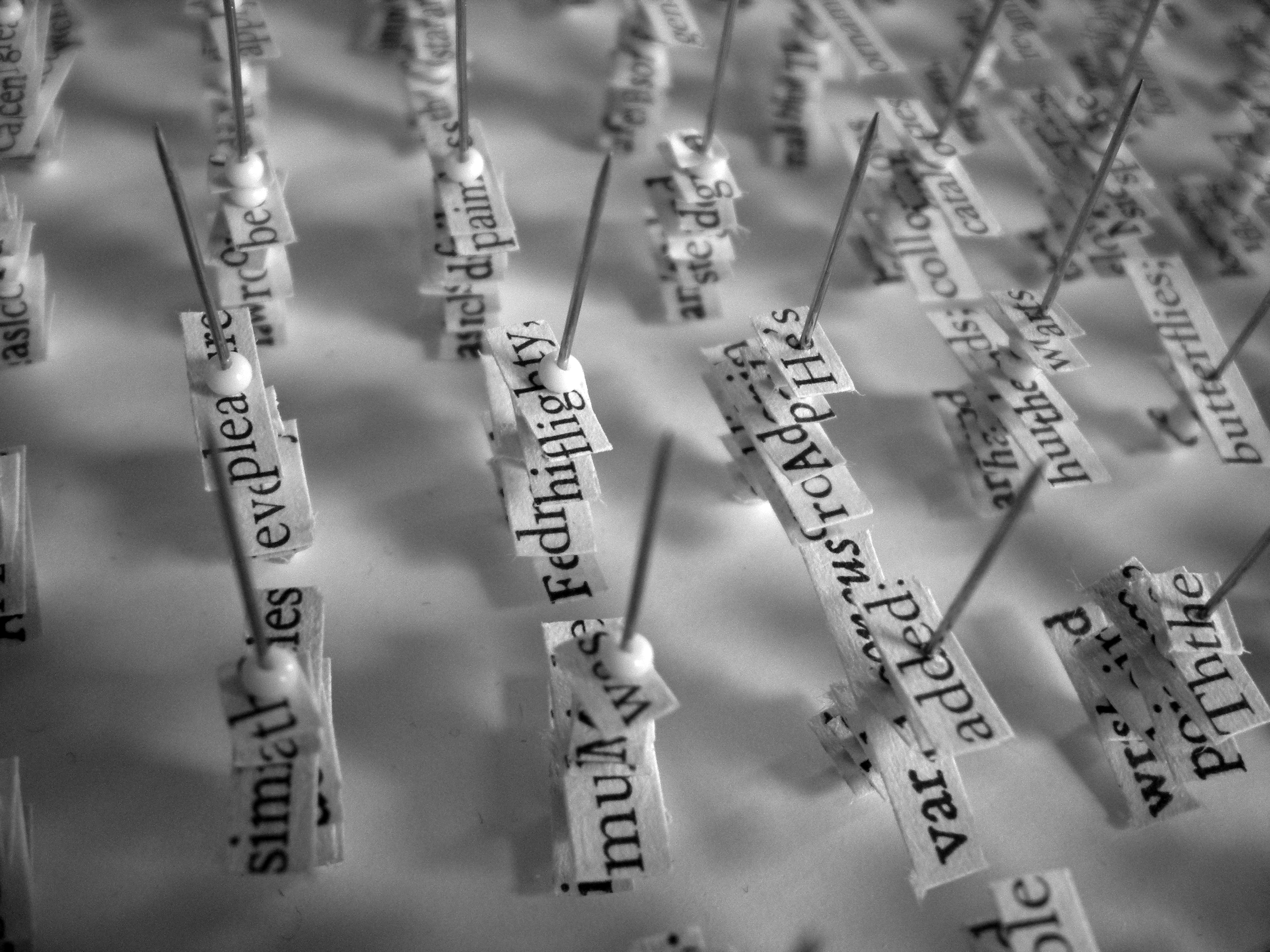The Butterfly Library
(2006)
 1. Pins
1. PinsIn this project I collect passages from novels that contain the words butterflies or butterfly. When I have read a novel that includes a relevant passage, I pin it to my grid. The texts are layered on the grid in the order that I read them, earliest at the bottom, most recent at the top. When the words butterfly or butterflies appear on a pin the layering stops. This means that words from subsequent texts are eliminated and replaced. As the project progresses more and more words will be subtracted from the texts leaving the grid covered in butterflies.


2. Extraction
It is the destructive nature of the collector that interests me. As soon as a book is included in my project it becomes unreadable (dead). When installed the project was housed in a perspex display case and due to the poor quality of paper used in paperback fiction the words on the pins will one day disintegrate entirely mirroring the decay of a butterflies wings.

3. Pinning
Although I have not added a book to the grid for some years, this project is theoretically ongoing.
Installation at Bromley House Library (2010)
